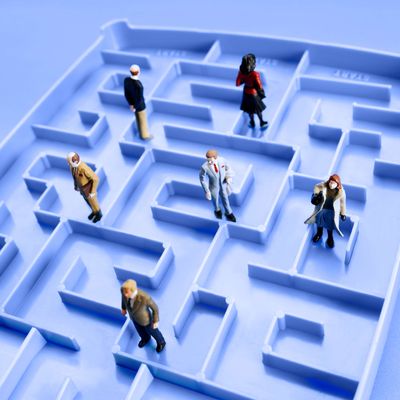
Last week, I bought a hoodie. I like this hoodie. I have worn this hoodie at least twice since I bought it, and I have no real intention of returning the hoodie. And yet the tags are still on it, just in case I decide I want to take it back after all.
The hoodie is a small-stakes example of a reversible decision, because I know I can change my mind about it at any time (or, at least, any time that still falls within the store’s return policy). And according to at least a decade’s worth of scientific literature on decision-making, this means I should be less satisfied with this particular hoodie than another one I knew I couldn’t return. Keeping your options open ultimately makes you less happy with whatever it is you’ve chosen, says an oft-cited study co-authored by Harvard’s Dan Gilbert; you’d do better to make a decision you can’t change and move on with your choice without looking back.
And yet some new research hints that some psychologists may be changing their minds about what happens when you know you can change your mind, and that reversible decisions might make some people perfectly happy. It all depends on what kind of decision-maker you happen to be.
Psychologists have argued there are two types of decision-making styles: There are maximizers, and then there are satisficers. Maximizers are concerned with making the very best decision, hemming and hawing and hemming some more until they’ve considered every possible option. Satisficers, on the other hand, know what they want, and once they find an option that meets their criteria, they pick that and move on with their lives. It’s a “nothing but the best” versus an “eh, good enough” mind-set. Some people always tend toward one or the other, and some vary depending on the context. (Maybe they easily chose their apartment, for example, but take forever to decide what they want at a restaurant.)
You may not be surprised to learn which of these ultimately leads to greater happiness. The research has shown that satisficers tend to be happier with their choices when compared to maximizers, who, even after spending all that time and energy when making the decision, are still more likely to end up regretting it. One 2006 study, for example, surveyed graduating college seniors about their decision-making styles, and then followed them for a year as they applied for and accepted their first real jobs. On the one hand, maximizers’ exacting standards served them well: They ended up taking jobs that paid an average of 20 percent more than the jobs the satisficers landed in. And yet the maximizers were less happy with their jobs than the satisficers, perhaps because they couldn’t help comparing the jobs they had to the jobs not taken.
Now, consider a different line of research on decision-making and happiness, one that considers the process rather than the person. As mentioned earlier, research by Gilbert and others has shown that, although people tend to think they’ll prefer reversible decisions, irreversible decisions usually lead to greater happiness down the road. For example, in one such study, students were told to pick out a poster to take home; some of them were told they could change their minds and swap the poster for a different one within 30 days, while others were told their decision was final. In the end, those who were told they couldn’t change their minds ended up being happier with their decision than those who were told their choice was reversible.
A new study by Rebecca Shiner of Colgate University, published in Social Psychological & Personality Science, is kind of a mash-up of these two threads of research. In it, Shiner replicated the poster-picking experiment, but she also asked the 258 participating students to take a survey that would determine whether they leaned toward maximizer or satisficer when they made choices. When Shiner analyzed her results, she found that satisficers were indeed happier with their decision when it was permanent. But the opposite was true for the maximizers, who were happier knowing they could change their mind.
And this is something of a minor revolution in the decision-making literature, which has for the most part implied that maximizers should adopt a satisficer’s mind-set. Shiner’s work suggests that, at least for the little things, maximizers might be better off recognizing their tendencies around decision-making and adjusting accordingly.
Like my hoodie, the choice of a free poster to take home is a relatively small one, and so, Shiner said, it’s “not clear whether this same pattern would be obtained with a more significant life decision.” For that matter, one of her experiments showed that the most extreme maximizers in the study did indeed tend to be happier with the decision they couldn’t take back. Still, for the more moderate maximizers and the more trivial choices, this new research suggests that “maximizers may be happier with open-ended decisions that they can reverse, whereas satisficers may be happier with final decisions,” Shiner said. Knowing the door is still open, even if they never really intend to use it, may be soothing to an anxious maximizer’s mind.
So the key to making better decisions may ultimately be to understand how you tend to make decisions. To get an idea of whether you’re more of a maximizer or a satisficer, you can take this short quiz. Or not. It’s up to you.

